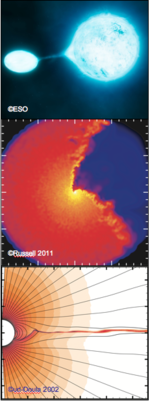
Magnetic fields are crucial ingredients in a star evolution,

influencing its formation, the structure of its atmosphere and interior, as well as controlling the interaction with its environment. For binary stars, magnetism is even more significant, as magnetic fields in binary systems will be strongly affected by, and may also strongly affect, the transfer of energy, mass and angular momentum between the components in these important stellar systems. However, the interplay between stellar magnetic fields and binarity has yet to be investigated in any real detail, from either an observational or theoretical point-of-view. Nevertheless, the incidence and characteristics of magnetic fields are key parameters for understanding the physics of binaries. In higher-mass stars (above 1.5 Msun) the incidence of magnetic stars in binary systems provides a basic constraint on the detailed origin of the magnetic field, assumed to be fossil remnant, and whether such strong magnetic fields suppress binary formation. In low-mass stars, tidal interactions are expected to induce large-scale 3D shear and/or helical flows in stellar interiors that can significantly perturb the stellar dynamo. Similar flows may also influence the fossil magnetic fields of higher-mass stars. Magnetically driven winds/outflows in cool and hot close binary systems have long been suspected to be responsible for their orbital evolution, while magnetospheric interactions have been proposed to enhance stellar activity. However, the crucial observational constraints required to test these hypotheses are, at present, nearly nonexistent.
The Binarity and Magnetic Interaction in various calsses of Stars (BinaMIcS) project has been initiated in 2012 thanks to the allocation of 606 hours of telescope time via a large program on the high-resolution spectropolarimeter ESPaDOnS. Proposals of two large programs have been submitted for the two other similar instruments Narval and HARPSpol. They will complement these observations to increase the sample and diversify our targets.
Using cutting-edge observations, sophisticated theory and realistic simulations, we will observe and model the magnetic fields and the magnetospheric structure and coupling, of both components of hot and cool close binary systems over a significant range of evolutionary stages. Our results will confront current theories and trigger new ones, with the aim of qualitatively improving our understanding of the complex interplay between stellar magnetism and binarity.